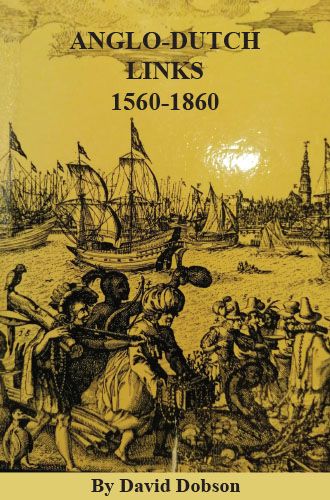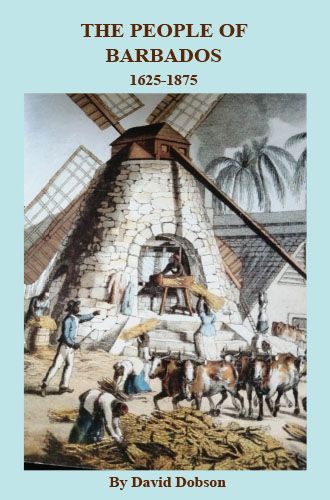
Also New This Spring . . . Two New Books from Dr. David Dobson
Anglo-Dutch Links, 1560-1860
Social and economic links between the Netherlands and England have existed from the medieval period. During the early modern period, from the Reformation onwards, these links intensified when the two countries united in opposing a common enemy in the shape of Spain. At other times economic rivalry led to war between England and the United Provinces. The Dutch United East India Company and the Dutch West India Company, supported by the Dutch merchant navy, on the other hand, were rivals to England’s mercantile ambitions, so conflict between the two broke out in Europe and America. .In the sixteenth and seventeenth centuries, religious refugees settled both in the Netherlands and England; English Puritans ventured to Holland, for example in Leiden, and Calvinists from Flanders, Zealand and Holland, emigrated to England, establishing the Dutch Reformed churches in London. Throughout the period trading links between the two countries were expanded leading to merchants and craftsmen settling in ports such as London, Rotterdam, and Antwerp. The establishment of universities in the Netherlands, especially Leiden’s medical school, attracted students from England during the period.
This book attempts to identify English people in the Netherlands, temporarily or permanently, and similarly Dutch or Flemish people in England. It also lists people trading between the two countries, as named in domestic and colonial records. Dr. Dobson identifies upwards of 1,000 Anglo-Dutch links between 1560 and 1860, and for each we are given a full name, date, specific place in England or Holland, and the source. In many instances we also learn of the individual’s religious affiliation, vessel, relatives, or other particulars.
People of Barbados, 1625-1875
Captain John Powell claimed Barbados for the Crown of England in 1625, and two years later the first shipload of settlers arrived from England. The island was ideal for the production of tobacco, sugar, and cotton; consequently, soon entrepreneurs arrived from England aiming to produce such crops and market them in England and to some extent in Europe Most of the white population of Barbados came from England and Wales, with a minority from Ireland and Scotland. There was also a considerable number of Sephardic Jews there, who had been encouraged by Oliver Cromwell to settle in Barbados to avoid persecution of the Spanish Inquisition. By the early eighteenth century a significant migration occurred from Barbados to the Leeward Islands, the Windward Islands, Jamaica, and as far north as South Carolina where the plantation economies were rapidly expanding.
This book is based on research into manuscript and published sources, mainly located in Great Britain but also in Barbados. Dr. Dobson identifies numerous non-Scottish inhabitants and for each we are given a full name, date, and the source. In many instances we also learn of the individual’s religious affiliation, vessel, relatives, or other particulars.
[NB Dr. Dobson has treated the Scottish immigrants of Barbados separately, in his book ‘Barbados and Scotland, Links 1627-1877, Baltimore, 2005.]





